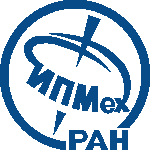
|
ИСТИНА |
Войти в систему Регистрация |
ИПМех РАН |
||
Identification of Soil Resources Problems in European Russiaстатья
- Авторы: Golosov Valentin N., Paramonova Tatiana, Kust German, Litvin Leonid, Andreeva Olga
- Сборник: Global Degradation of Soil and Water Resources
- Глава в коллективной монографии
- Год издания: 2022
- Издательство: Springer Singapore
- Местоположение издательства: Singapore
- Первая страница: 449
- Последняя страница: 473
- DOI: 10.1007/978-981-16-7916-2_29
- Аннотация: European part of Russia is located within several landscape zones beginning from the tundra on the north near Arctic Ocean up to sub-tropic in the south on the Black sea coast. The high variability of climatic conditions together with lithological features of parent rocks determine the huge variety of soil types. The soil productivity also directly depends from the climate characteristics, so the territory of the European Russia can be divided on two relatively equal parts. The northern part is mostly forested areas with patchy farming and deer pastures in the tundra zone and the southern parts is mainly croplands with pastures located mostly in semi-desert zone on the south-east and in the Caucasus Mountains. So, land degradation associated with agriculture activity is widespread mainly within the forest-steppe, steppe and semi-desert landscape zones of the southern half of the European Russia. While industrial anthropogenic activity as well as the urban agglomerations affect the soil localized, transforming it to a different degree and completely destroyed soils in many cases. In addition, it is necessary to emphasize the greatest danger both to humans and to the natural environment as a whole is highly polluted soils in urban and adjacent areas. The structure of chapter is constructed in such a way that in the first two parts we discussed the consequences of the natural-anthropogenic impact on the soil, associated from the one hand with different type of land use and on the other hand with climate characteristics of territory as well as with global climate changes. The various types of anthropogenic pollution of the soil are analyzed in the second part of the chapter. The special attention is paid to territories with pollution levels exceeding permissible standards.
- Добавил в систему: Голосов Валентин Николаевич